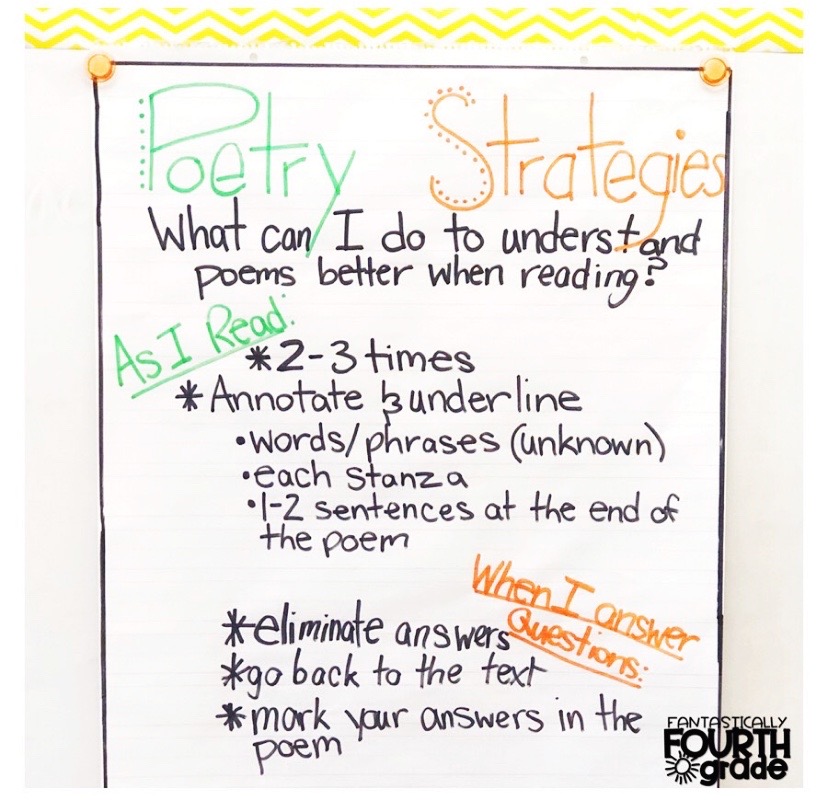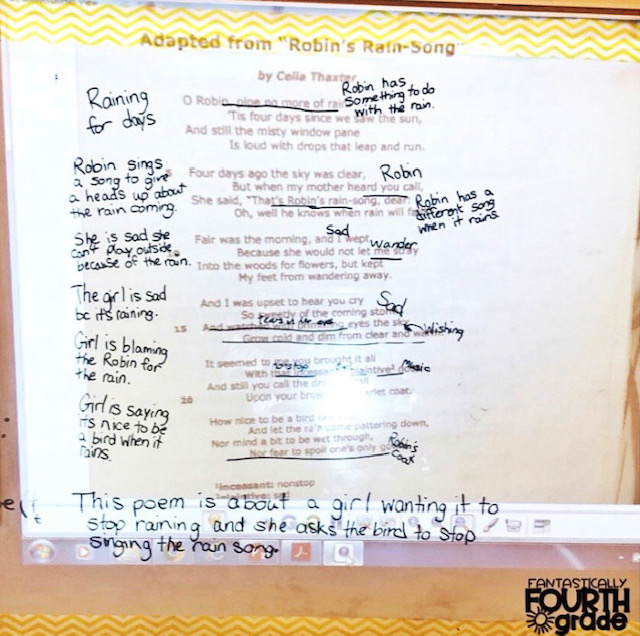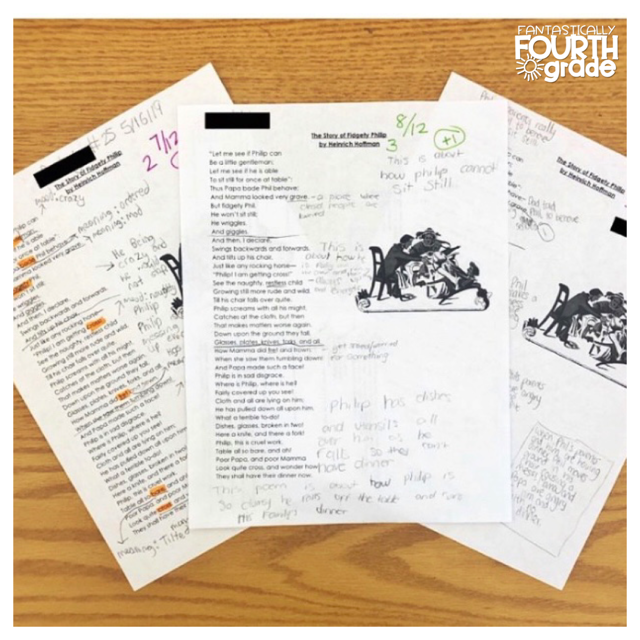Do your students like poetry? Did you like poetry as a student? If you are anything like me or my students, the answer would probably be “not at all” or “it is confusing”. When I moved to 4th grade and learned I would be teaching poetry, I was less than enthusiastic about it. Honestly, I thought it would be a unit that I would just have to get through and that it didn’t really matter that much. Yes, I am ashamed to even admit that I thought poetry wasn’t that important, but it is the truth and I am sure some of you could relate! For years, I went through the motions of teaching a poetry unit and just followed what other teachers or the curriculum told me to do. Year after year, my students really struggled with poetry, especially when it came to test prep. time. I finally realized the problem! I did not even know how to read and understand poetry myself. That year, I made it a goal to first understand poetry myself to help my students understand poetry. Wow! What a difference this made. Now, I make it my goal to make sure that my students know how to read and make meaning of poetry. I no longer just go through the motions of teaching a poetry unit, I now make it a mission to make sure my students understand how to read a poem and even enjoy reading poetry! Check out the 5 steps I use to teach and support my students with understanding poetry!

Step 1- Teach Your Students HOW to Read a Poem: My favorite way to do this is by creating an anchor chart like the one above that walks my students through what to do when they read a poem and when they are answering comprehension questions on a poem. I highly recommend that you create this anchor chart with your students. I like to have my students create their own bookmark to mirror this anchor chart to pull out anytime they read a poem too!
Step 2- Model, Model, Model: Modeling is SO important when it comes to helping your students understand how to read a poem and use those strategies on the anchor chart to help them understand. I start by modeling a poem completely on my own without any student help. Then, I use a gradual release with the 2nd poem. I do the first stanza on my own and have students help me annotate and write a summary for the other stanzas. Trust me, the slower you do this portion, the better! You may even split this up over multiple days.

Step 3- Partner Practice: I always have my students practice the strategies we have talked about on the anchor chart and practiced as a whole class with a partner BEFORE trying it on their own! You may even want to give them multiple chances with partners. This will help reinforce these strategies and how to actually read a poem.
Step 4- Individual Practice: After my students have had plenty practice using these strategies and reading poems, it is time for them to independently read and answer questions about a poem. This will help you see which students may need additional small group practice and which students are able to read a poem independently.
Step 5- Teacher Feedback: This step is so important! It is important that your students have feedback, from you, on how they are using these strategies to read a poem. Do they need to annotate more? Are they rushing through reading the poem? Do they need to use strategies when answering questions about the poem? Make sure you give your students a chance to go back and use the feedback that you have given by fixing their poem or trying on a new poem!

Would you like a resource to help you get started with implementing these steps? Click on the button below to check out my poetry lesson that will give you everything you need to help your students understand not only how to read poetry, but how to understand it too!








